Name Rangjung Dorje, | ||
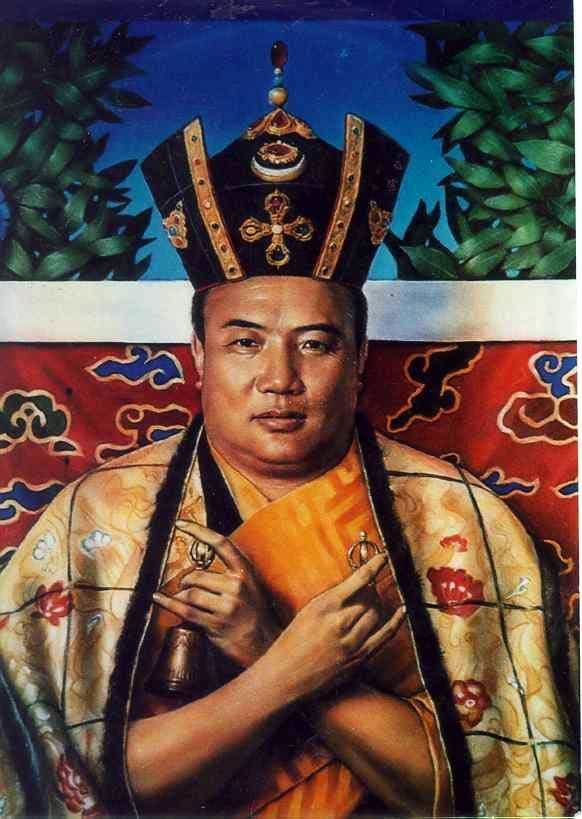 | ||
Other names His Holiness Rangjung Rigpei Dorje Died November 5, 1981, United States of America | ||
Popular Karma Kagyu & Rangjung Rigpe Dorje, 16th Karmapa videos
The sixteenth Gyalwa Karmapa, Rangjung Rigpe Dorje (August 14, 1924 – November 5, 1981) (Wylie Rang 'byung rig pa'i rdo rje) was spiritual leader of the Karma Kagyu lineage of Tibetan Buddhism. He was born in Denkhok in the Dergé district of Kham (Eastern Tibet), near the Yangtze River.
Contents
- Popular Karma Kagyu Rangjung Rigpe Dorje 16th Karmapa videos
- Popular Rangjung Rigpe Dorje 16th Karmapa Trinley Thaye Dorje videos
- Biography
- Escape from Tibet
- Focus on the West
- Death
- Legacy
- Watch collection
- References
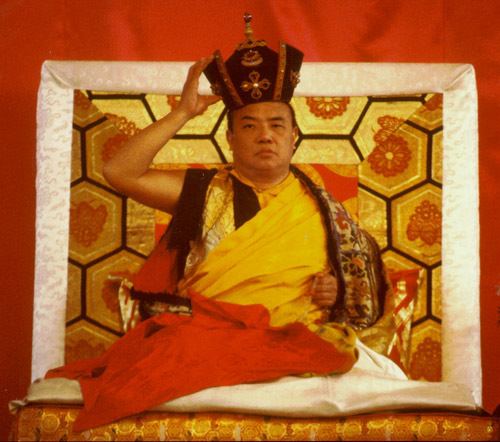
Popular Rangjung Rigpe Dorje, 16th Karmapa & Trinley Thaye Dorje videos
Biography
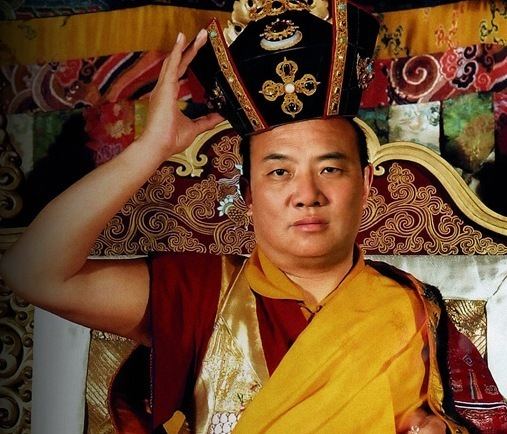
After the 15th Karmapa's passing, the Karmapa's attendant, Jampal Tsultrim, hid for months believing that the 11th Tai Situpa would punish him. However, the attendant finally revealed that he possessed the sacred letter of prediction, which matched exactly with the proceeding the 11th Tai Situpa was already undertaking to find the 16th Karmapa Rangjung Rigpe Dorje. The 11th Tai Situpa later recognized the 16th Karmapa Rangjung Rigpe Dorje.

He was taken to the Palpung Monastery where the 11th Tai Situpa, Pema Wangchok, gave him ordination, the Bodhisattva vows and many teachings. Beru Khyentse Lodro Miza Pampa'i Gocha taught him the tantras. Bo Kangkar Rinpoche taught him the sutras. Jamgon Palden Kyentse Oser taught him Mahamudra and the Six Yogas of Naropa. He regarded the 11th Tai Situpa, Pema Wangchok, and the 2nd Jamgön Kongtrül Khyentse Öser as his root gurus. In 1931, at the age of seven, he performed his first Black Crown ceremony. He received his hair cutting ceremony at age thirteen from Thubten Gyatso, 13th Dalai Lama.
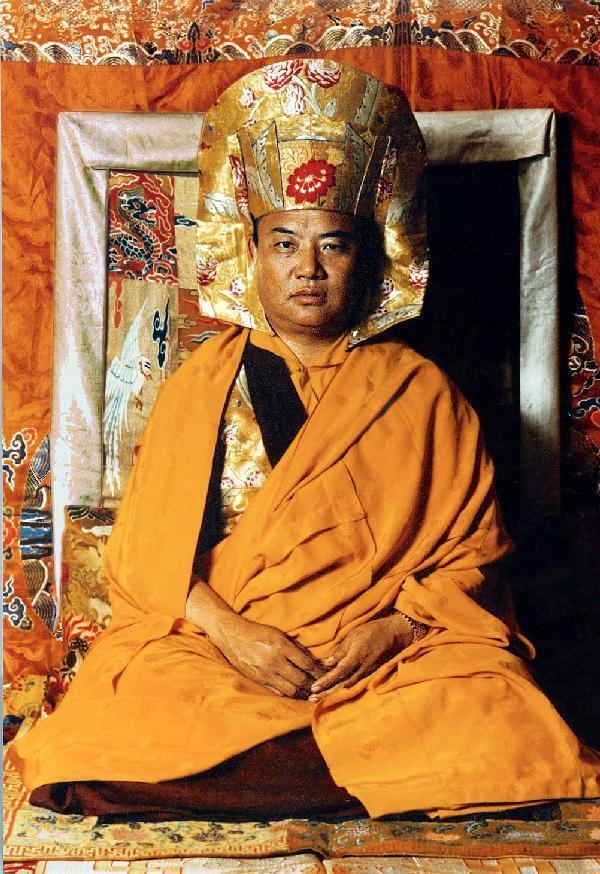
During his education he received all the Kagyu transmissions and was also taught by the Sakya Trizin for many years. In the beginning of 1940 he went into retreat, and in 1947 started a pilgrimage to India together with Tenzin Gyatso, the 14th Dalai Lama. Rangjung continued his education with the 10th Mindrolling Trichen of the Nyingma School and it was concluded with the Kalachakra initiation of the Gelugpa School. Rangjung had therefore received all the major teachings of all the major Tibetan Buddhist schools.
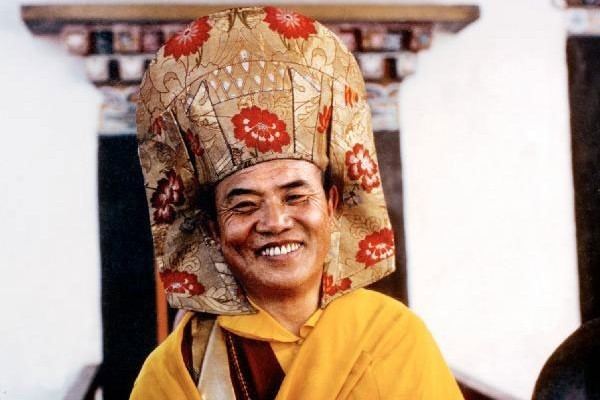
The 16th Karmapa continued his predecessor's activities, travelling and teaching throughout Tibet, Bhutan, Nepal, Sikkim, India and parts of China. His activity also included locating the rebirths of high reincarnate lamas spontaneously, without meditation.
Escape from Tibet
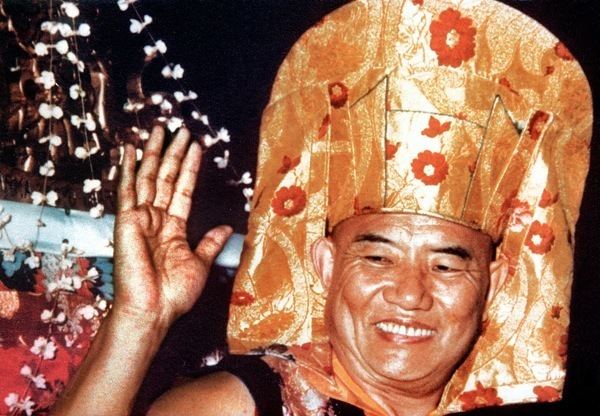
Political circumstances altered Tibet radically with the 1950 takeover by the China. Karmapa, along with the Dalai Lama, government officials, and other high lamas, attended talks in Beijing to negotiate a settlement. This succeeded for a while, but in 1959 the Chinese government insisted on land reform, and the conflict with the lamas who owned a lot of land accelerated.
In February of that year Karmapa took 160 students from Tsurphu Monastery and escaped to Bhutan, taking the lineage's most sacred treasures and relics with them.
Tashi Namgyal, the King of Sikkim, offered land to the Karmapa near the site where the 14th Karmapa had established a monastery. It was here that his new seat, Rumtek Monastery, was built in 1966. The traditional seat of the Karmapa, Tsurphu Monastery, still exists, but the number of monks is restricted.
Focus on the West
In the beginning of the 1970s the Karmapa made the prediction that Tibet would have a hard struggle gaining independence and even if it did, it would not allow the refugees to return. Rumtek would not be a good place either, and although Sikkim and Bhutan are still stable, they can deteriorate as well. However the Western world will embrace Buddhism. And after that predication he sent Lama Gendün to Europe.
In 1974, with the help of Freda Bedi, he embarked on his first world tour, travelling to Europe, Canada and the United States, giving several Black Crown ceremonies, and an audience was granted by Pope Paul VI. In 1976-77 he began a more exhaustive tour, giving extensive teachings and empowerments and visiting nearly every major city in Europe.
The sixteenth Karmapa helped foster the transmission of Tibetan Buddhism to the West. He established Dharma centers and monasteries in various places around the world in order to protect, preserve, and spread the Buddha's teachings. As part of an initiative by the Tibetan government-in-exile to consolidate the organizations of Tibetan Buddhism, Rangjung Rigpe Dorje became the first formal head of the Kagyu School, although the earlier Karmapas had long been considered the most prestigious and authoritative lamas of that school.
Death
In 1980-81 the Karmapa began his last world tour, giving teachings, interviews and empowerments in South East Asia, Greece, England and the United States. Rangjung Rigpei Dorjé died on November 5, 1981 in the United States in a hospital in Zion, Illinois. Doctors and nurses at the hospital remarked on his kindness and how he seemed more concerned with their welfare than his own.
One doctor was also struck by the Karmapa's refusal of pain medication and the absence of any signs of feeling the profound pain that most patients in his condition report. Upon his death, against hospital procedure but in keeping with Tibetan tradition and with special permission from the State of Illinois, his body was left in the hospital for three days and his heart remained warm during this time. Chief of staff Radulfo Sanchez had no medical explanation for this.
He was cremated in Rumtek. During the cremation a triple circular rainbow appeared above the monastery in a clear blue sky. Many photographs exist of this remarkable phenomenon. While his body burned, an object rolled from the flames to the Lopon Tsechu. This object was quickly recovered and proved to be the Karmapa's eyes, tongue and heart. This was taken to indicate that the body, speech and mind have come together to be saved as relics for the future and is common in only the highest of accomplished Buddhist yogis - exactly the same thing is said to have occurred during the cremation of Gampopa and the Second Karmapa, Karma Pakshi.
Legacy
The simple presence of Karmapa would create a profound and lasting blessing on all people coming into contact with him. He himself said that a Buddha should be known by his laugh and it was said that when Karmapa laughed, which he did all the time, one would hear him several houses away.
He also demonstrated a complete ability to communicate with animals. Once, at a course in Europe, a large raven tapped on the window where Karmapa was teaching. When let in, the bird flew directly to Karmapa, after which he instructed two people to go to a barn a few miles down the road where two other birds were trapped and starving. The birds were discovered and rescued. Rangjung Rigpe Dorje had a special fondness for birds and he considered a visit to the local petshop in every city in the world an essential part of his travels.
Like his predecessors, he was primarily a spiritual figure and therefore not involved in politics. He instead made efforts to keep the spiritual traditions of Tibet intact and in this way helped to preserve the identity of Tibet as a unique and individual culture. Spiritually, he is an inspiration to hundreds of thousands of people across the world who meditate on him daily.
Rangjung Rigpe Dorje, as with all other Karmapas and tulkus, is accepted by Tibetan Buddhists as a manifestation of an enlightened being. Tulku is the Tibetan word for the Sanskrit "nirmanakaya". According to Lama Tsewong Gyurme, there are various types of nirmanakaya in Tibetan Buddhism:
The nirmanakaya represents the variety of roles a buddha may play among ordinary people. He [or it] may appear, for example, as a type of art or artistic talent; as an apparently ordinary being as the Karmapa; or as a Buddha born in a given era, such as Shakyamuni. The latter is the supreme type of nirmanakaya.
Watch collection
The 16th Karmapa was very found of watches. He had a collection of various kind of watches. One of his favourite was a 1800s pocket watch, which he gifted to Mr. Gyan Jyoti.
